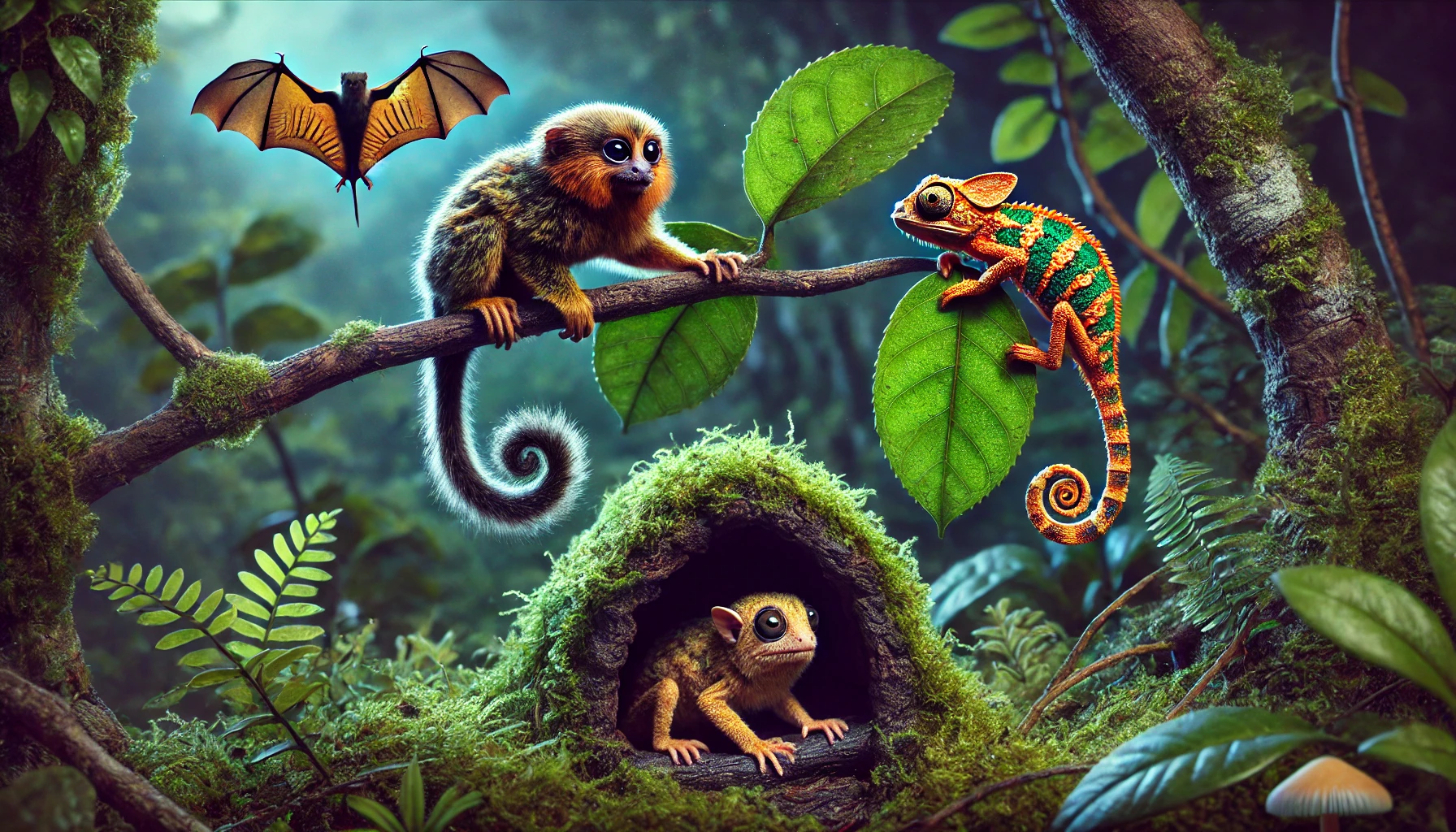Nature is home to some of the smallest animals that are almost too tiny to believe. These microscopic and miniature creatures have evolved to survive in their unique environments while often being overlooked by the human eye. In this article, we uncover some of the smallest animals in the world and explore how their size benefits them.
What Defines the World’s Smallest Animals?
The world’s smallest animals are species that measure just millimeters or centimeters in length. These animals often thrive due to their small size advantages, such as squeezing into hidden places, avoiding predators, and adapting to extreme conditions. The smallest animals have amazing strategies for survival.
10 of the Smallest Animals in the World
1. Paedocypris Fish – The World’s Smallest Fish (7.9 mm)
The Paedocypris fish holds the title of the smallest vertebrate, measuring just 7.9 mm long. Found in the swamps of Indonesia, it thrives in acidic waters where larger fish struggle to survive. This fish is a remarkable example of the smallest animals adapting to harsh conditions.
2. Etruscan Shrew – The World’s Smallest Mammal (1.5g)
Weighing less than a penny, the Etruscan shrew is the smallest mammal by weight. This tiny insectivore has a rapid metabolism and must eat constantly to stay alive.
3. Brookesia Micra – The Smallest Chameleon (16 mm)
This miniature chameleon from Madagascar is so small it can comfortably sit on the tip of a matchstick! Despite its size, it has the same remarkable camouflage abilities as its larger relatives.
4. Pygmy Marmoset – The World’s Smallest Monkey (100g)
The Pygmy marmoset is the smallest monkey, native to South America. Weighing just 100 grams, it easily navigates the dense rainforests by jumping between branches. Another example of the smallest animals living in diverse ecosystems.
5. Speckled Padloper Tortoise – The Smallest Tortoise (10 cm)
This South African native is the smallest tortoise species in the world, growing only up to 10 cm long. It blends seamlessly with rocky terrain to avoid predators.
6. Kitti’s Hog-Nosed Bat – The Bumblebee Bat (29-33 mm)
Also known as the Bumblebee Bat, this tiny flying mammal is the smallest bat species and one of the smallest animals overall. It weighs about 2 grams, making it one of the lightest mammals.
7. Fairyfly – The Smallest Insect (0.139 mm)
The Fairyfly is the smallest insect in the world, measuring only 0.139 mm. These microscopic wasps are barely visible to the naked eye and are often mistaken for dust particles.
8. Octopus Wolfi – The Smallest Octopus (1.5 cm)
This miniature cephalopod is the smallest known octopus, weighing just 1 gram and measuring 1.5 cm in length. It can squeeze into tiny crevices to evade predators. Truly one of the smallest animals in the marine world.
9. Monte Iberia Eleuth – The Smallest Frog (10 mm)
Native to Cuba, this tiny frog is only 10 mm long and among the smallest amphibians. It thrives in humid rainforests and has a loud call despite its tiny size.
10. Philippine Tarsier – The Smallest Primate (9-16 cm)
One of the smallest primates, the Philippine tarsier, has enormous eyes that help it hunt insects in the dark. It can rotate its head 180 degrees, giving it exceptional night vision.
How Do These Tiny Animals Survive?
Despite their size, these animals thrive by:
- Blending into their surroundings to avoid predators.
- Adapting to extreme environments where larger species struggle.
- Using unique survival strategies, such as rapid movement or toxic skin.
Final Thoughts
From microscopic insects to miniature mammals, these tiny animals prove that size isn’t everything when it comes to survival. Their evolutionary adaptations showcase the diversity of life and how even the smallest animals can make a big impact in nature. Take a look a our Wildlife Quiz.


2 thoughts on “The World’s Smallest Animals That Are Shockingly Tiny”